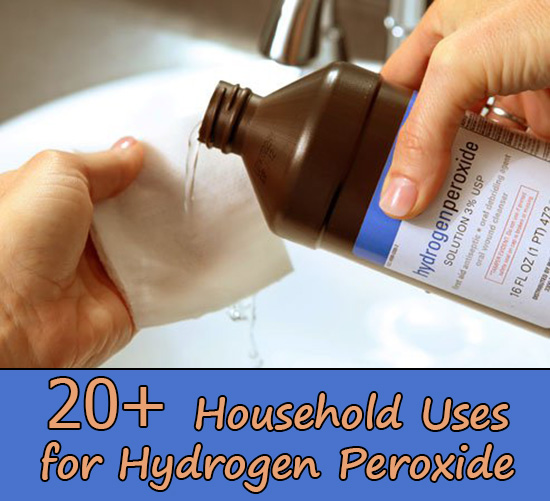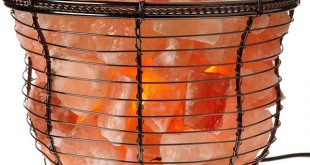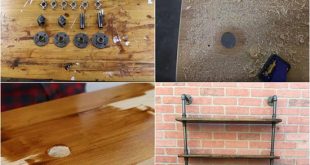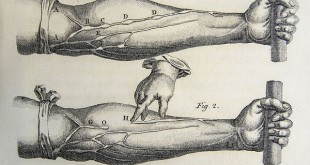20+ Household Uses for Hydrogen Peroxide

Nearly every home has a bottle of hydrogen peroxide sitting in the medicine cabinet. Long used as a first aid treatment for cuts and scrapes, this bubbly mix of water and H2O2 has been shown to heal infections as severe as gangrene through simple oxidation.
Recent research, however, has shown that your bottle of hydrogen peroxide may not be as medically useful as you think. In fact, many doctors don’t recommend its use for traditional wounds, saying it can actually inhibit the natural healing process. Before you run to the cabinet to toss that brown bottle, however, read on. We’ve compiled a list of household uses for peroxide that may just make it more useful in your home than ever before!
Peroxide For Pearly Whites:
An increasingly common ingredient in commercial toothpastes, hydrogen peroxide can have maximum whitening effects when used in a cheap and easy homemade form. Simply mix baking soda and hydrogen peroxide to form a paste. Brush normally and use daily for a brighter smile!
Magical Mouthwash:
An equal mix of hydrogen peroxide solution and water can make a great and effective antibacterial and whitening mouthwash! Simply swish the mixture in your mouth for 30 seconds being careful not to swallow any.
Cleaning Your Dehumidifier:
Add a pint of hydrogen peroxide to one gallon of water and run the solution through humidifiers to disinfect and remove any mold or mildew that may be growing inside.
Beauty Brush Bacteria Buster:
Makeup brushes and sponges can be breeding grounds for potentially harmful bacteria. To sterilize makeup brushes, tweezers, sharpeners and the like, first soak in a mix of castile soap and warm water. Rinse in cold water then soak for about 10 minutes in a mix of peroxide and water. Rinse well with cold water then dry on a clean cloth.
Spic and Span Sponges:
Simply mix equal parts of water and peroxide in a bowl. Soak a dirty sponge in the solution for 10 minutes, then rinse and reuse!
Distinguished Digits:
For a home manicure, first trim and file nails. Next, fill a bowl with warm water and add 15 drops of almond, avocado or olive oil. Soak your fingertips in that solution for about 10 minutes, then dry hands and wipe nails with a hydrogen peroxide-soaked cotton ball to whiten. After treatment, massage a drop of oil into each cuticle.
Simple Sink Scrub:
A stained sink can brighten right up with a simple spray of hydrogen peroxide. Let the peroxide sit for at least 30 minutes before scrubbing and rinsing.
Foot Fungus:
To cure a foot fungus, simply spray a 50/50 mixture of Hydrogen peroxide and water on them (especially the toes) every night and let dry.
Grout Cleaner:
You can also brighten dingy grout around the bathroom with a spray of hydrogen peroxide. Just let the solution bubble for about 10 minutes, then scrub with a brush and rinse clean!
Wash Fruits & Vegetables:
Spray Your fruits and veggies with hydrogen peroxide and then let them soak for around a minute or two before rinsing in clean water to remove dirt, wax, and other contaminants.
Brighter Bowl:
Simply pour hydrogen peroxide directly into your toilet bowl and let stand for 20-30 minutes. The peroxide will disinfect and bleach stains away while you wait! Finish with a quick scrub from a toilet brush.
Cleaner Air:
To clean your humidifier from the inside out, combine a pint of peroxide with a gallon of water and run it through.
Stain Stopper:
You can easily beat tough blood or red wine stains in clothing by pouring hydrogen peroxide directly on the stain, letting sit a few minutes, then rinsing in cold water. Keep in mind peroxide is a mild bleaching agent, so use only on light clothing or test in a small area first.
Pit Stain Stopper:
To effectively erase underarm stains on your shirts, combine one part castile soap and two parts hydrogen peroxide, apply to stains, and let sit for one hour. Rinse the clothes in cold water then run through the washing machine as normal.
Cuts and infections:
Soak your cuts or infections for five to ten minutes several times a day. Even gangrene that would not heal with any medicine has been healed by soaking in Hydrogen peroxide. Put half a bottle of hydrogen peroxide in your bath to help rid boils, fungus or other skin infections.
Clean Your Refrigerator:
Spray hydrogen peroxide around the inside of your refrigerator and let is soak for a few minutes. Then wipe away with a clean cloth to remove food and disinfect.
Bleach Alternative:
The manufacturing process to make chlorine bleach releases toxic dioxins into the environment. You can banish bleach from your home and instead replace it with hydrogen peroxide. Simply soak light-colored laundry in peroxide, rinse with cold water, then run it through the washing machine as normal.
Get rid of acne and boils:
If you have acne or boils, you may be able to help speed up your natural healing process by applying a little hydrogen peroxide to the infected sites. It will act just the same way it does on wounds, helping to kill the unwanted bacteria and cleanse the area. Just as with wounds, you do not want to overdo this so apply just once a day. If you apply to your acne or boils more than this, you will kill the good bacteria too.
Cutting Board Cleaner:
To sanitize your kitchen cutting boards, spray them with hydrogen peroxide, allow to bubble for a few minutes, then rinse and wash with soap and water.
 Home and Gardening Ideas At home and Gardening ideas we believe inspiring readers about homesteading, self sufficiency
Home and Gardening Ideas At home and Gardening ideas we believe inspiring readers about homesteading, self sufficiency






The Manufacturing of chlorine bleach does not release dioxins, you are getting confused with with its use in the paper manufacturing industry.